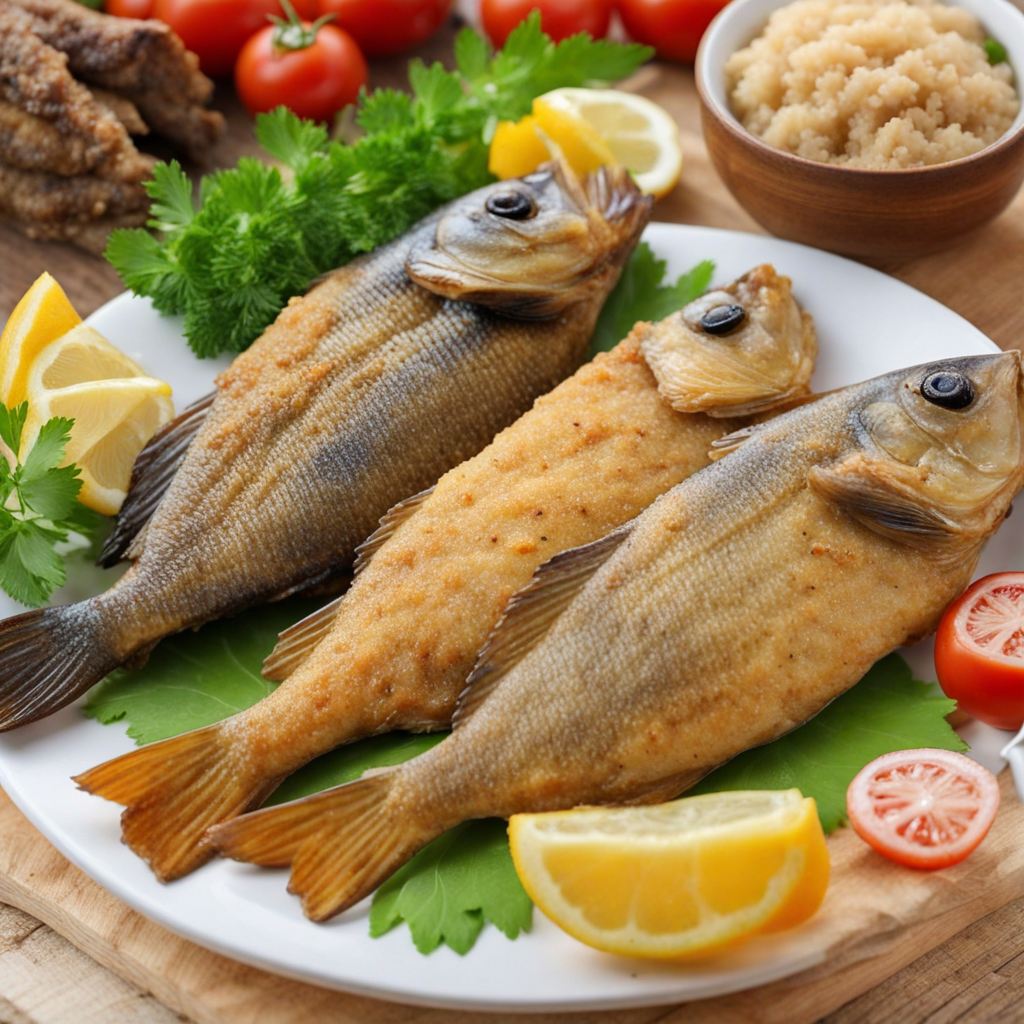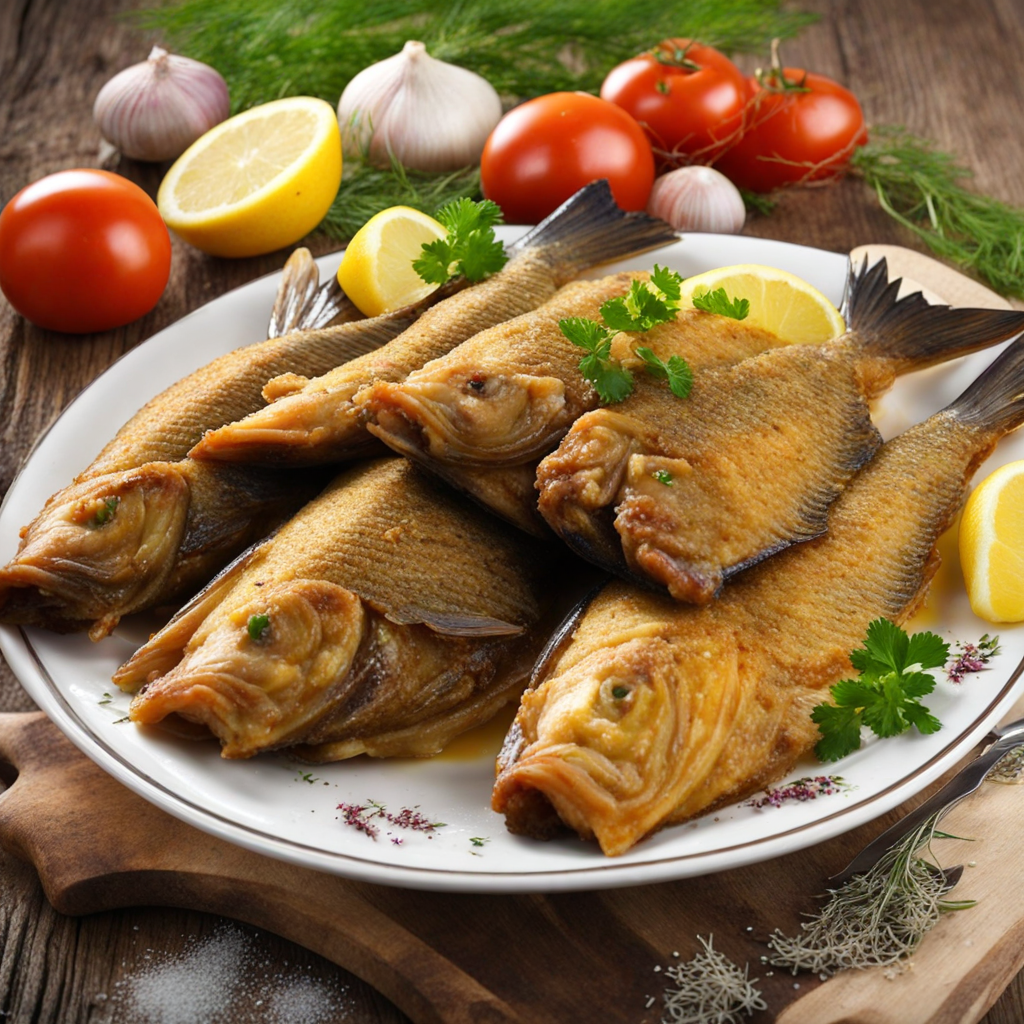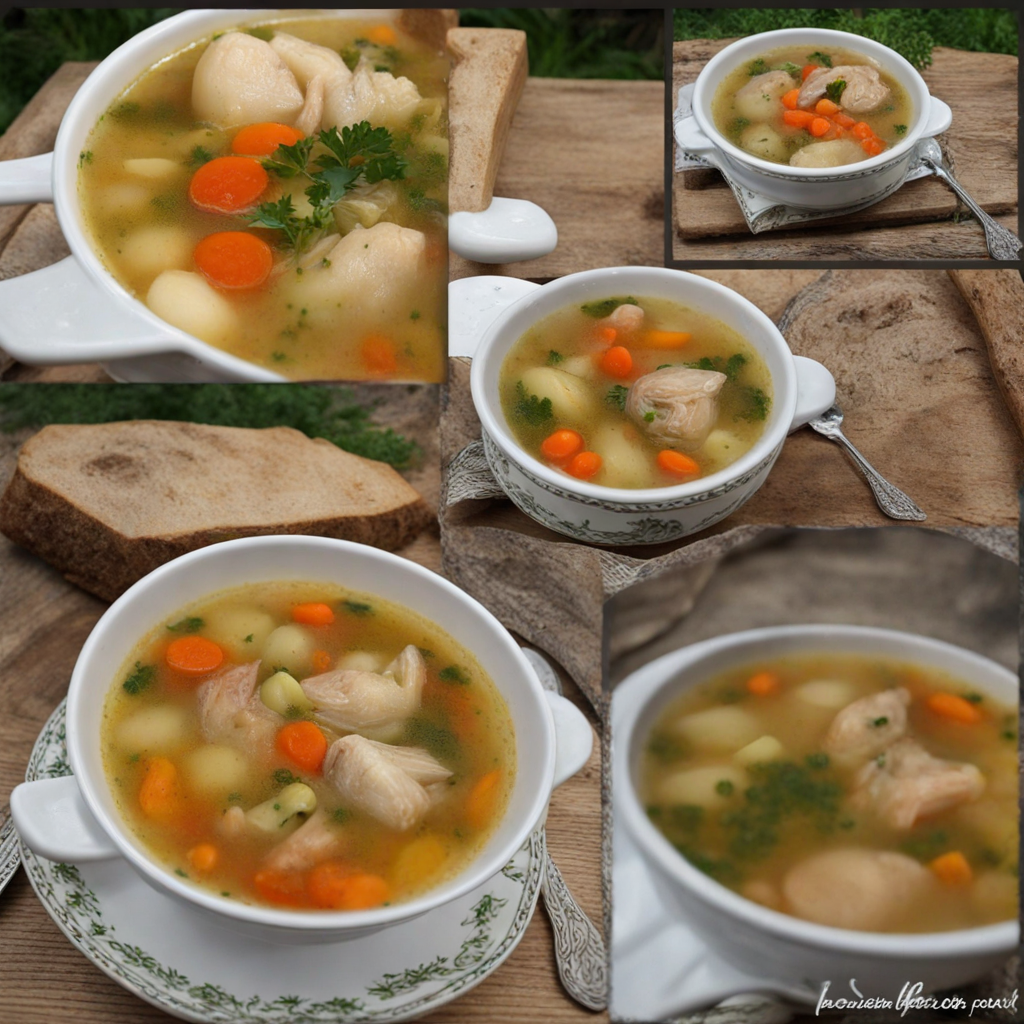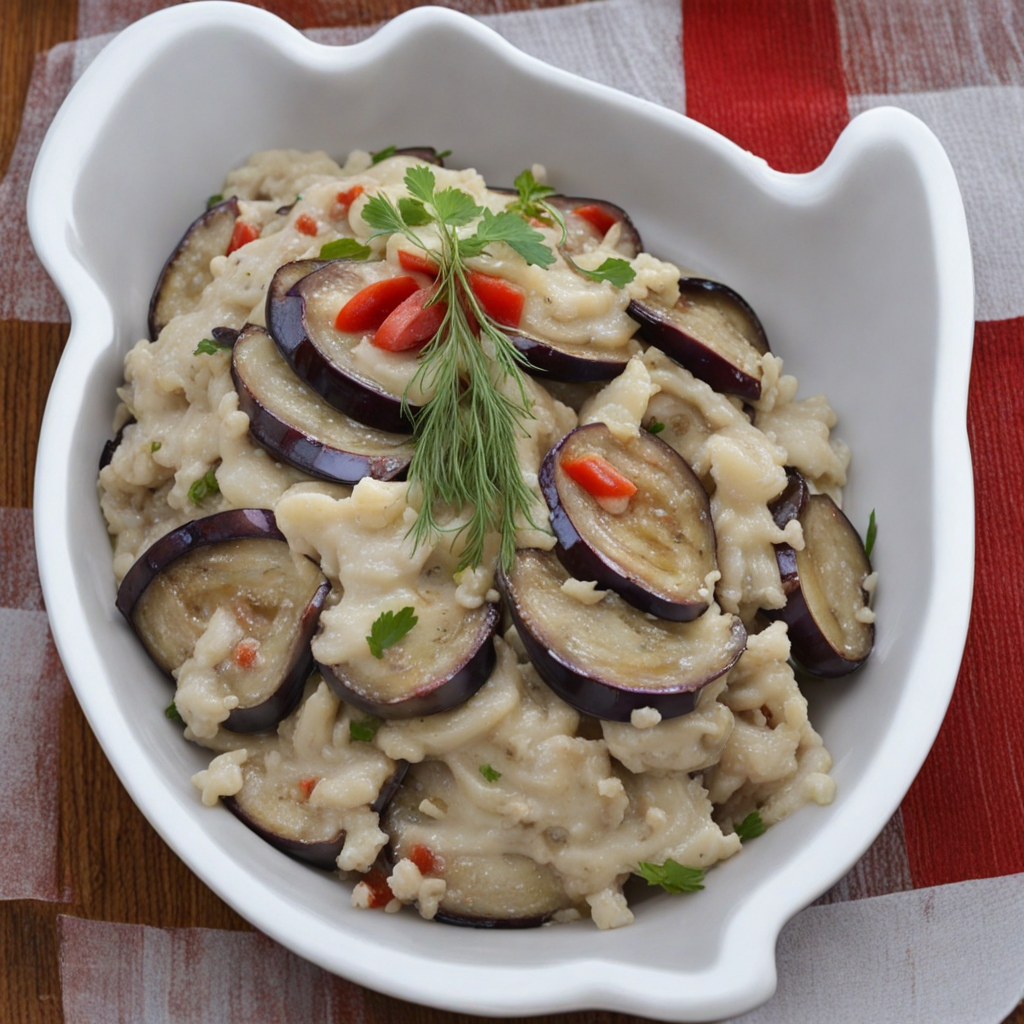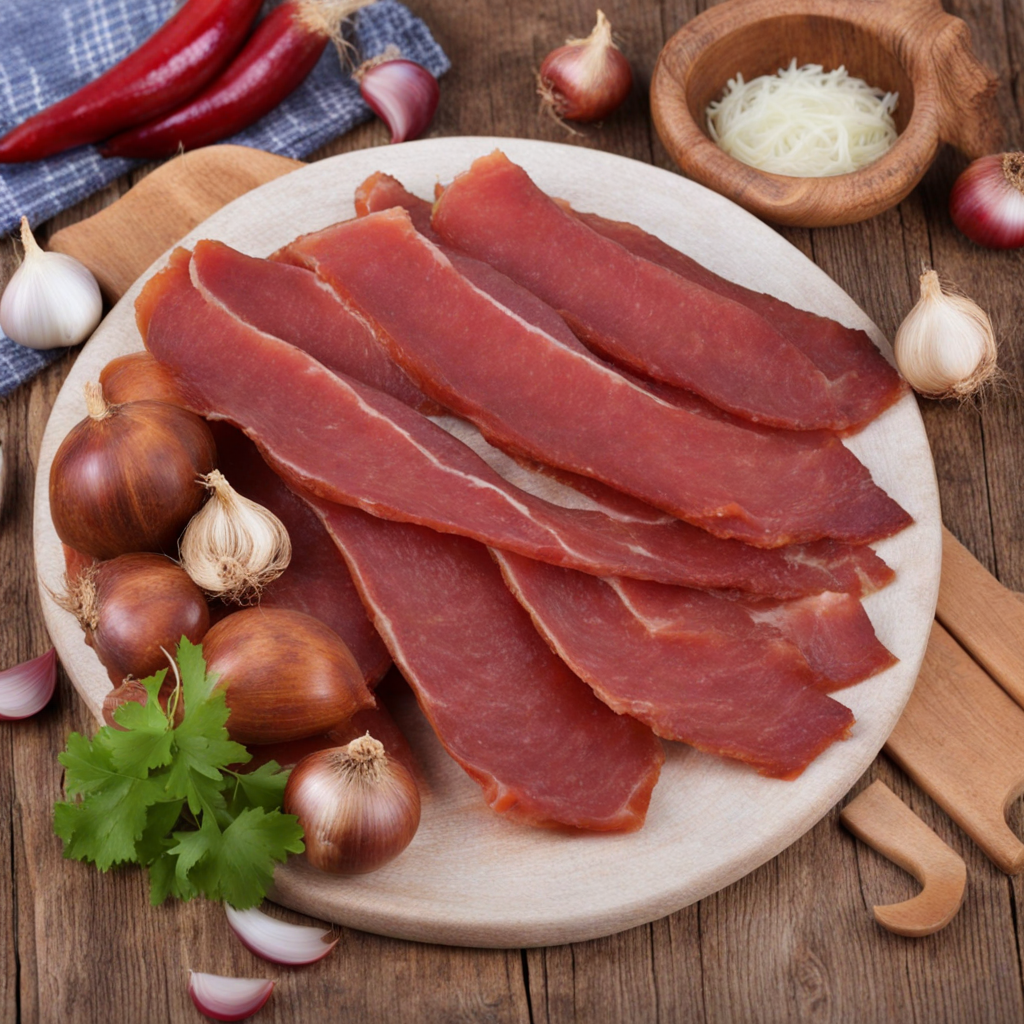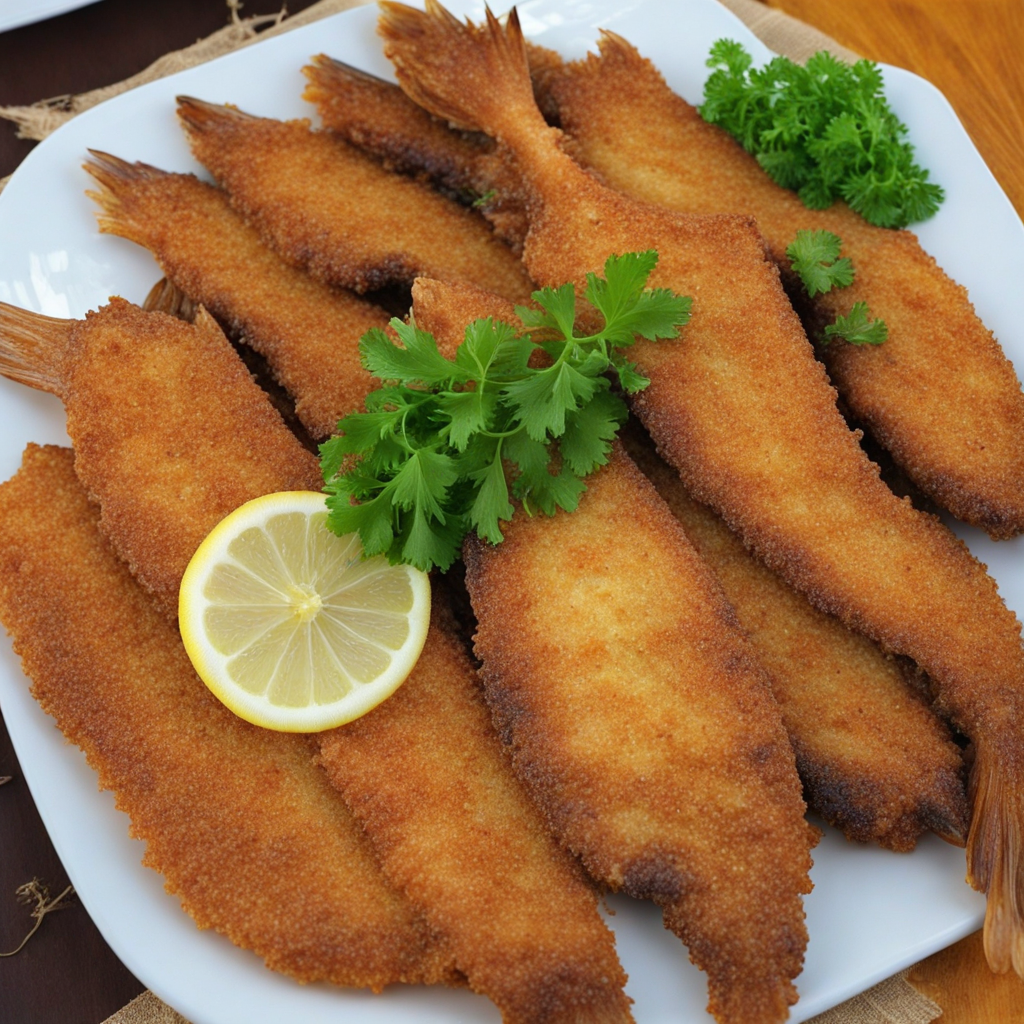Fried Carp
Fried Carp, or "Crap Prajit" as it is known in Romania, is a traditional dish that showcases the rich culinary heritage of the country. This dish is typically made using fresh carp, a fish that thrives in the waters of Romania's many rivers and lakes. The carp is cleaned and filleted, then marinated with a blend of spices that may include salt, pepper, and garlic, allowing the flavors to penetrate the tender flesh. The marinated fillets are then coated in flour or cornmeal, which adds a delightful crunch when fried to a golden brown. The cooking process is simple yet effective, as it perfectly balances the fish's natural flavors with a satisfying crispy texture. The aroma of frying carp wafts through the air, inviting you to indulge in this delightful dish. As you take your first bite, the crispy exterior gives way to the moist and flaky fish within, offering a wonderful contrast in textures. The flavor profile of Fried Carp is mild and slightly sweet, characteristic of freshwater fish, and is often enhanced with a squeeze of lemon or a sprinkle of fresh herbs like parsley. This dish is frequently served with polenta or a side of tartar sauce, which complements the richness of the fried fish and adds a tangy brightness to each mouthful. Fried Carp is not just a meal; it is an experience that embodies the essence of Romanian hospitality and tradition. It is often enjoyed during family gatherings or celebrations, bringing people together around the table. As you savor each bite, you may also find yourself appreciating the simplicity and authenticity of Romanian cuisine, where fresh ingredients and time-honored cooking techniques shine. Eating Fried Carp is an invitation to explore the flavors of Romania and connect with its vibrant culture through the universal language of food.
How It Became This Dish
The History of Crap Prăjit: A Culinary Gem from Romania Origin and Early Roots Crap prăjit, or fried carp, is a beloved dish in Romania, particularly during the festive season of Christmas. The dish’s history is intertwined with the country's cultural and agricultural practices, as well as its geographical location. Carp, a freshwater fish, has been a staple in Romanian diets for centuries, thanks to the country's abundant rivers, lakes, and the Danube Delta. The earliest records of carp fishing date back to ancient times, when the Danube served as a vital resource for sustenance and trade. The tradition of eating carp, especially during Christmas, is rooted in Christian customs. In Romania, Christmas is celebrated with a variety of traditional dishes, but carp holds a special place on the festive table. The practice of fasting before Christmas often leads to the consumption of fish as a permissible food. This religious observance encouraged families to cultivate and harvest carp in ponds, making it a practical and symbolic choice for the holiday feast. Cultural Significance Crap prăjit is not merely a dish; it embodies the essence of Romanian hospitality and family values. The preparation and sharing of this meal often bring families together, fostering connections and creating lasting memories. In many households, the process of preparing the carp involves multiple generations, with grandmothers passing down secret recipes and techniques to their grandchildren. This intergenerational bonding is central to Romanian culture, where food acts as a medium for storytelling and the transmission of traditions. Beyond its familial significance, crap prăjit is also a representation of regional identity. Different areas of Romania have their own variations of fried carp, influenced by local ingredients, cooking methods, and culinary preferences. For instance, in Transylvania, the dish may be paired with polenta and sauerkraut, while in the Danube Delta, it might be served with a side of fresh salad and homemade tartar sauce. These regional nuances highlight the diversity of Romanian cuisine and the importance of local resources. Development Over Time As Romania evolved through the ages, so did the preparation and presentation of crap prăjit. Initially, the dish was quite simple: whole carp seasoned with salt and fried in lard or oil. As culinary techniques advanced and the influence of neighboring cultures permeated Romanian kitchens, the dish saw various enhancements. In the 19th century, with the rise of the bourgeoisie and the introduction of more refined cooking methods, the preparation of crap prăjit became more sophisticated. Chefs began to experiment with marinades and coatings, introducing spices and herbs such as garlic, paprika, and dill to elevate the flavor profile. The practice of battering the fish before frying, which adds a delightful crunch, became popular during this period. This transformation reflects a broader trend in Romanian cuisine, where simplicity meets sophistication, creating dishes that are both accessible and indulgent. The 20th century brought further changes, particularly during the communist regime. Restrictions on ingredients and a focus on self-sufficiency meant that many families relied on local produce and traditional methods. As a result, crap prăjit became a nostalgic dish, evoking memories of simpler times. It was common for families to raise their own carp in backyard ponds, reinforcing the connection between food and family traditions. In contemporary Romania, crap prăjit has made a resurgence, celebrated not only in homes but also in restaurants and food festivals. The dish is often featured in local markets, where vendors offer freshly fried carp, drawing in locals and tourists alike. This revival of traditional cuisine reflects a broader movement to preserve and celebrate Romania’s culinary heritage in an era of globalization. Modern Variations and Pairings Today, crap prăjit can be found in various incarnations, showcasing the creativity of modern Romanian chefs. Some restaurants may serve it with an array of dipping sauces, such as homemade tartar sauce or a zesty garlic sauce, while others may accompany it with seasonal vegetables or fresh herbs. The dish can also be found in fusion cuisine, where it is paired with unconventional sides like avocado salad or served in tacos, reflecting the adaptability of Romanian culinary traditions. Furthermore, the popularity of crap prăjit has transcended borders. Romanian diaspora communities around the world cherish their culinary heritage, often recreating the dish in their new homelands. Food blogs and social media have played a significant role in this trend, allowing recipes and cooking techniques to be shared globally. As a result, crap prăjit not only serves as a reminder of home for Romanians abroad but also introduces a wider audience to the rich flavors of Romanian cuisine. Conclusion Crap prăjit is more than just a fried fish; it is a symbol of Romanian identity, culture, and tradition. Its evolution from a simple, seasonal dish to a celebrated culinary icon speaks to the resilience and adaptability of Romanian cuisine. As families gather around the festive table to enjoy this cherished dish, they are not just nourishing their bodies but also honoring their heritage and creating new memories. In a world that often leans towards fast food and convenience, the story of crap prăjit reminds us of the importance of tradition, the joy of cooking, and the significance of sharing meals with loved ones. As Romania continues to embrace its culinary past while looking towards the future, crap prăjit remains a delicious testament to the enduring power of food to connect people, preserve history, and celebrate culture.
You may like
Discover local flavors from Romania


